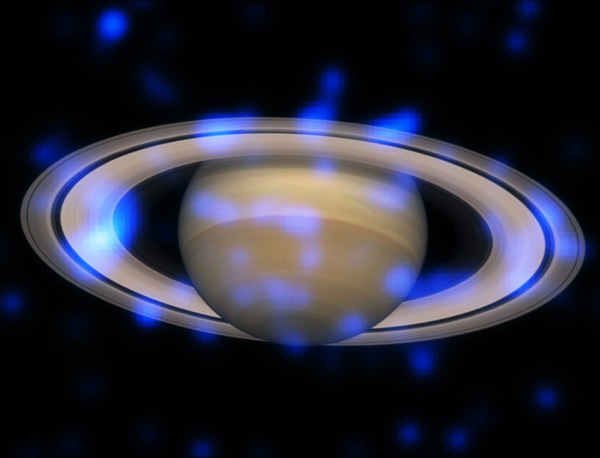Saturn: The 6th planet from the Sun.
Caption: Chandra images reveal that Saturn's rings sparkle in X-rays (blue dots in this X-ray/optical composite). The likely source for this radiation is the fluorescence caused by solar X-rays striking oxygen atoms in the water molecules that comprise most of the icy rings. As the image shows, the X-rays from the rings mostly come from the B ring, which is about 25,000 kilometers wide and is about 40,000 kilometers (25,000 miles) above the surface of Saturn (the bright white inner ring in the optical image). The apparent concentration of X-rays on the morning side (left side in the image) could be due to additional solar fluorescence from clouds of fine ice-dust particles that are lifted above the surface of the rings by meteoroid impacts on the rings.
Scale: At the time of this observation, the angular diameter of the disk of Saturn was 20.5 arcsec.
Chandra X-ray Observatory ACIS Image
|


